- Administrator
- Albums and Singles
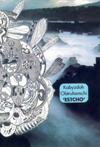 Sometimes one disc isn't enough. Following up his stunning cassette debut last year, Russian cosmo-wizard Sergey Kozlov returns with a double disc's worth of rock demolition. Whereas the cassette fidelity of the first kept things murky and mysterious though, the two CDs here find Kozlov presenting a far clearer and more expansive concoction that unfurls the vision of a new and potent psychedelic voice.
Sometimes one disc isn't enough. Following up his stunning cassette debut last year, Russian cosmo-wizard Sergey Kozlov returns with a double disc's worth of rock demolition. Whereas the cassette fidelity of the first kept things murky and mysterious though, the two CDs here find Kozlov presenting a far clearer and more expansive concoction that unfurls the vision of a new and potent psychedelic voice.
Of course Kozlov isn't without his influences, and much of his strength lies in his willingness to incorporate the techniques of past exploratory rockers such as Parson Sound and Hawkwind, as well as '70s modal folk material, through his own lens. That Kozlov does it all alone with overdubs and loops is all the more impressive, as what results has none of the repetitive tendencies of most one man bands, instead sounding far closer to a taut and unified rock band than a one man unit likely enacting its prowess in said musician's basement.
Both discs presented are three tracks in length, each beginning with its shortest and ending with its longest piece. And I don't use piece lightly here; these are too vast to be considered songs, yet far too together and constructed to be considered jams. Call them suites if you will, but each number here is infused with pockets and pockets of ideas held together through the sheer momentum and energy of their construction.
Take the opening "Jahendra Shitzaga," for example. Beginning with an encroaching two-note bass line and drifting vocals, guitars sprawl out above before Kozlov's drums come pummeling forward. While much of this could more or less been assembled strictly through loops however, it is clear from the bass alone that Kozlov really played each part through, making it nearly impossible to decipher the kernel from which he started the track but infusing it with a live and elastic in-the-moment quality that too often is lacking when there are only two hands at work.
Those two hands sure do work however, and both Kozlov's drumming and guitar work are magnificent. Everything here seems driven primarily by rhythm, which serves Koslov well as he has a knack for a hard hitting, in-the-pocket approach that drives the work far beyond mere pummel and into the depths of a more lively experimentalism whose sights are set on the outer reaches rather than the inner head-banger. It is, it seems, this rhythmic component which is always at work. On "Kilobelnaya," the 20-plus minute closer to disc one, a modal folk grows and grows, heading toward a pulse and, once finding it, riding along it with enthusiastic delight. Some of the production here even comes across as a bit dubby, everything drifting off and into itself as each element is treated with spatial regard to everything else.
Closing disc two, "Emptuhi Campusabba" is a broad and far-reaching piece that perfectly encapsulates all that Kozlov achieves here. With odd vocal utterances that might well be Pandit Pran Nath had he endulged in a bit too much cough syrup, the work's flutes, guitar and rambling spaciness pulls from so many sources that it treads a fine line between sounding at once familiar and entirely distinctive. This is, perhaps better than anything else, as fine an indicator as there could be of Kozlov's talents. Never the imitator, Kozlov is absolutely aware of his predecessors, and using that knowledge with skill and honesty is too rare a thing.
Also of note here: the album, released by Stunned, is highly limited, as only 100 copies were made. Too often this is seen as an indicator not of limited budgets and homegrown operations, but of sub-par quality releases undeserving of greater distribution. As Stunned and Kozlov have proven repeatedly however, some of the most viable and exciting music coming out is done so on these labels, whose lack of overhead cost allows for an experimentalism that commercial requirements too often quell. Truly a find, and one which will someday surely be regarded with great reverence, so long as people are given the opportunity to hear it.
samples:
Read More
- Administrator
- Albums and Singles
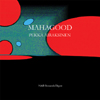 Pekka Airaksinen has never been particularly well known outside of his native Finland, but he has the unique distinction of appearing not once, but twice on the legendary list that accompanied Nurse With Wound's debut album (once as himself, once as The Sperm). In the ensuing four decades since his heyday as an underground rock luminary, he has quietly released an avalanche of material on his own label (not mere hyperbole: he is attempting to release an album dedicated to each of the one thousand Buddhas), while toiling in relative obscurity. While I have no intention of plunging into the time- (and finance-) engulfing black hole of his back catalog just yet, I can happily report that Mahagood shows that the old fellow is still as vital and playfully skewed as ever.
Pekka Airaksinen has never been particularly well known outside of his native Finland, but he has the unique distinction of appearing not once, but twice on the legendary list that accompanied Nurse With Wound's debut album (once as himself, once as The Sperm). In the ensuing four decades since his heyday as an underground rock luminary, he has quietly released an avalanche of material on his own label (not mere hyperbole: he is attempting to release an album dedicated to each of the one thousand Buddhas), while toiling in relative obscurity. While I have no intention of plunging into the time- (and finance-) engulfing black hole of his back catalog just yet, I can happily report that Mahagood shows that the old fellow is still as vital and playfully skewed as ever.
Airaksinen’s output since his return to releasing music in the 1980s has been quite varied (veering into new age, house, and electro-jazz) and, by his own admission, occasionally trivial. Mahagood, however, is a wholly different animal. For one, Airaksinen has completely eschewed traditional instrumentation and has instead improvised an eclectic and plunderphonic avant-garde collage. Secondly, he has nostalgically cannibalized his early influences (swing jazz and early electronic music) for the bulk of the source material.
The album’s first track, “Water Is Best,” is built around a lurching and relentlessly deranged repetition of a big band saxophone snippet that is constantly intruded upon by discordant flutes, manipulated drums, and kitschy organ interludes. These themes (abruptly stopping and starting jazz loops, odd juxtapositions, and unexpected stabs of dissonance) remain consistent for the rest of the album. In fact, they are so consistent that the second track, “Nobody Is Free,” is almost indistinguishable from the first, except that it is enhanced by funky stand-up bass and builds up to some alien metallic dissonance before segueing into the beautifully disquieting and somewhat harsh path of “Let Your Anger Die Before You” and “Waves Follow Waves.”
Airaksinen threatens to return to a groove again with the blues-appropriating “Once I Was In Their House,” but deep foreboding strings and eruptions of dissonance quickly pervert the ebullient cut-ups into something entirely nightmarish before fading into the haunting ambiance of “Why All This Prelude.” Immediately afterwards, “Don’t Educate Your Children Too Smart” delivers exactly the sort of unsettling nocturnal jazz expected to be playing in the background at the brothel from Twin Peaks. The album is concluded with a palate-cleansing double-dose of violent surrealist sound pile-ups (the two-part “My Tongue Swore, My Mind Didn’t”) that make it quite clear why Stephen Stapleton would be a fan.
Mahagood works best when appreciated in its entirety, as there are constant revisitations of themes and samples throughout, but nearly all of the nine tracks are excellent when taken individually. Airaksinen’s masterfully kaleidoscopic shifts from playful mischief to disturbing darkness and back again are uniquely his own. This is a challenging and inspired work and I hope it finds the audience it deserves. Of course, Airaksinen probably won't notice if it does, as he will presumably be hard at work on the remaining nine hundred albums in his Buddha series.
Samples:
Read More
- Administrator
- Albums and Singles
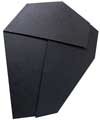 At Brainwaves last year, Peter Christopherson claimed that this album was the best thing he had ever done. Such a lofty claim raised eyebrows and now it is time to see if this is the truth. While I cannot agree with Christopherson, he and Ivan Pavlov have certainly made a fantastic album. It is of a far different character to their previous transmission under the SoiSong name; xAj3z is warm and vibrant compared to the fragility of their debut.
At Brainwaves last year, Peter Christopherson claimed that this album was the best thing he had ever done. Such a lofty claim raised eyebrows and now it is time to see if this is the truth. While I cannot agree with Christopherson, he and Ivan Pavlov have certainly made a fantastic album. It is of a far different character to their previous transmission under the SoiSong name; xAj3z is warm and vibrant compared to the fragility of their debut.
While I found SoiSong’s debut EP to be removed from either Christopherson’s or Pavlov’s style, xAj3z shares a large amount of its DNA with the electronic vocal twisting of Christopherson’s Threshold HouseBoys Choir and with the strange jazz-like sounds that ran through Coil’s posthumous releases. “T-Hu Ri Toh” typifies this approach: a peppy piano motif is slowly mutated as robotic vocals are mangled concurrently. The apparent simplicity of the piece disappears with careful listening as the slight alterations of the various sounds and multiple layers of detail create untold depths to reward deep listeners. This is true of the rest of the album where straightforward ideas are transmutated into something grander by simply shading in the details. For example, Pavlov’s guitar and Ddkern’s drumming on “Dtorumi” along with Christopherson’s electronics make for a track that is reminiscent initially of Portishead. However, through subtle use of processing and arrangement the piece becomes something more exotic and joyous.
What strikes me most about xAj3z is its celebratory mood. This is especially evident in the trumpet calls at the end of the album during “Ti-Di-Ti Naoo” and it is hard to not feel utterly content while the piece plays out (have SoiSong discovered the audio equivalent of Valium?). The contemplative vibe to this album is a marked difference between this album and the duo’s other works (including the SoiSong EP) despite there being so many stylistic similarities between them all. Even on the tracks that I found hard to get into at first (both “J3z” and “Mic Mo” are little too easy listening electronica for my liking), it is difficult to ignore the bliss that runs through the music.
The same care that went into crafting this music has also gone into the packaging for xAj3z. The sleeve is less infuriating than the “disposable” packaging of their debut but it is still quite annoying to try to fold back up. Importantly, it is beautiful to look at; all the angles and odd dimensions make it look like it was designed by Daniel Libeskind. The effort of trying to open it without tearing the sleeve makes the album feel more personal, its tactile nature forcing you to engage with it before it even reaches the CD player. Speaking of players, the CD is again octagonal which means that slot loading disc drives are out of the question (although burning a copy to an ordinary CD-R is the obvious solution). The album’s title also gives access to a section of the SoiSong website which at the moment hosts images connected with xAj3z which is supposed to be expanded in the future so there is a chance that this album could grow in some untold way.
Overall, xAj3z is not what I expected at all and the surprise of how it sounds has made it all the better. Both Christopherson and Pavlov have done a sterling job in creating such a remarkable album. Although it does not make their respective works pale in comparison, it does light them in a warm glow.
samples:
Read More
- Administrator
- Albums and Singles
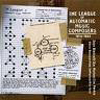 8-Bit artists and circuit benders active in today’s vibrant scene have met their match—and their aesthetic ancestors—in the League of Automatic Music Composers. Regarded as being the worlds first computer band, their unique foray into electronic sound worlds began in tandem with the budding world of microcomputers, which in the mid-1970s were just then newly available on the commercial market.
8-Bit artists and circuit benders active in today’s vibrant scene have met their match—and their aesthetic ancestors—in the League of Automatic Music Composers. Regarded as being the worlds first computer band, their unique foray into electronic sound worlds began in tandem with the budding world of microcomputers, which in the mid-1970s were just then newly available on the commercial market.
This is certainly one of my favorite recent releases from New World. The material was culled from a dusted off shoebox filled with over 30 cassette recordings in the possession of Tim Perkis, and 15 more from other band member Jon Bischoff. This collection comes 30 years after their initial formation, and is their first official release outside the appearance of a single track on a Lovely Little Records comp from 1980. James Horton, David Behrman, Paul Demarinis and Rich Gold were the other members who formed this notable collective. After the groups demise in 1983 when Horton's rheumatoid arthritis became debillitating, they all continued working in artistic, musical and academic fields with much mutual success.
Arising out of the Silicon Valley before it was even known as such, the exuberance heard on these recordings comes in part from the exploration of uncharted territory: no software, plugins, or presets were available for the Kim-1 which they learned to program for themselves in the 6502 machine language. The songs come from their many live performances in concert halls and art spaces around the Bay Area, from those played on the airwaves of freeform radio stalwarts KPFA, and the many sessions improvised at home. Occasionally, behind the oscillating din of singing circuits laughter and exclamations of an audience can be heard. People then weren't accustomed to the sounds of live computer music, which up until that point had been the province of a handful of university studios who committed music to magnetic tape for later playback and where the emphasis was more on precise control of the sound, as opposed to hearing what might happen when a bunch of computers are set up to interact with each other.
Networking their machines together, the League always played live, with nothing sequenced or pre-planned except for the programs each player had written for their station. The transmission of data between devices now linked together and modulating eachother gave the proceedings an element of indeterminacy, yet within the chaos of fluttering chords, degenerate blips and random tones there is an emergent sense of order. Listening to tracks like “Finnish Hall” is like taking a hallucinatory stroll through a basement arcade or visiting an electronic oracle whose voice is tweaked to a point beyond earthly comprehension. “Martian Folk Music” looks forward to a time after the Red planet has been colonized, when dulcimers and fiddles are no longer in the cultural repertoire, and when people square dance to the sounds of artificial intelligence improvising long glissando sweeps over a staccato pulse of gated, interrupted chords. “Oakland Four” consists of mysterious drones that gradually ascends an upward spiral of tone, joined by squeaking sounds, akin to those made by a rubber duck, and a low bass hum that keeps everything grounded. Each piece offers a different window into the various working processes of these hacker musicians who were engaged in a deep experimentation with the technology at hand.
My only complaint about this release comes from my greed: with so many tapes of music as potential source material, and with music this engaging, I wonder why it wasn’t expanded to be at least a double CD. Having been provided with these crucial sounds I want to hear more of what is on those tapes.
samples:
Read More
- Administrator
- Albums and Singles
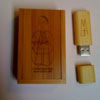 Consider this in the running for the "minimalist/maximalist" release of the year. While releasing an album on a USB flash drive is not a new thing, few of the ones thus far have had the same quality of presentation. Packaged in a small bamboo box, just slightly bigger than a matchbox, is an engraved bamboo drive which contains a total of ten unreleased albums, recorded between 1999 and 2008. Ten hours of music in a small box, which costs barely more than a single CD. However, with that much material, there is going to be a bit of overload.
Consider this in the running for the "minimalist/maximalist" release of the year. While releasing an album on a USB flash drive is not a new thing, few of the ones thus far have had the same quality of presentation. Packaged in a small bamboo box, just slightly bigger than a matchbox, is an engraved bamboo drive which contains a total of ten unreleased albums, recorded between 1999 and 2008. Ten hours of music in a small box, which costs barely more than a single CD. However, with that much material, there is going to be a bit of overload.
I don’t think I’m the only Brainwashed contributor that is not a big fan of the digital-only direction music is taking. While I have an iPod and use it while driving/working, nothing is the same as putting a CD in the player, or throwing on a nice heavy piece of vinyl, and turning up the stereo system. In this case, at least the presentation is nice, and the sound quality isn’t bad for a series of 224k MP3s. Modern home entertainment technology has at least moved forward enough that I can plug this in and listen to it on hardware other than just on my computer. In this case also, I doubt this amount of material could have been released in a cost effective and artistic way.
Now, preface aside, on this one gig flash drive is a set of ten MP3s, one for each album and a small photo gallery, all organized by a simple, yet effective, html interface. For better or worse, the albums presented here could have all been recorded around the same time, as the style doesn’t differ greatly from piece to piece, but the approach and dynamics do.
Some of the albums stay restrained and soft: Cretion is a study in textures, with various clicks and buzzes staying extremely quiet, with the occasional processed thump of a microphone and a small amount of electronic interference. Of all of the albums here, this is the one that is more easily labeled as "laptop" sounding, being based mostly on a microsound type concept. The following Section is similar, though allowing in obscured conversations, the occasional melodic tonal section, and occasional outbursts of percussion and tiny guitar sounds.
There is also a notable set of "medium" sounding albums, the opening album Torsion uses ragged lo-fi guitar and minimal walls of electronic sound that are thick and syrupy, but not harsh or aggressive, occasionally pulling away to allow chiming melodies and pieces of feedback to come forth. Both Tance and Position have similar dynamics, the former uses ethnic environmental sounds and oddly warbling and phased tones while the latter has some crunchy, overdriven fuzz and lost radio transmissions that come to the forefront. Both also have a focus on beeps and bleeps that could be a conversation between robots, Position especially having a notable psychedelic, spacey bent to it.
Of course, a few of the albums also stray more into the raw and more harsh sounds too. Partition opens with what sounds like heralding horns that lead to a pass of quiet reflection, but the second half of the album drenches the ambient tones in heavy reverb, occasional percussive elements, and rawer, static sounds make it a bit more of a standout album. Topie’s opening of amp noise and heavy bass rumbles sets the stage for what will be the harshest album here: the rumbles swell to grinding and clipping levels that aren’t too far removed from what would be heard on the Cold Meat Industries label during the heyday of power electronics/death industrial, though the twittering, chirpy electronic sounds keep it from being too bleak or black. Even the blasting organ tones might keep this album away from the stereotypical "noise" imagery, though the approach isn’t all that different.
It is definitely tough to cover this, because there’s simply so much material to try and digest. Ten hours of abstract electronics, found sounds, and random improvisation is a lot to sit through at once. At times, the barriers between the albums become obscured and the sound all blends together. But, given the cost to content ratio here, picking an album to listen to here and there rather than going on an electro-acoustic bender is the best way to tackle this.
samples:
Read More
- Administrator
- Albums and Singles
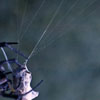 The unobscured natural photography on the cover of this disc sets up what is contained within. While the label is usually focused on the dark, opaque droning sounds, Gargaud’s contribution to Utech is much clearer and lighter, at least in relative terms. Mixing abstract electronics with some occasionally plaintive guitar playing, it stays relatively warm and organic throughout, with a few intentional, but compelling bumps along the way. At its core, it feels like a more stripped down version of Fennesz.
The unobscured natural photography on the cover of this disc sets up what is contained within. While the label is usually focused on the dark, opaque droning sounds, Gargaud’s contribution to Utech is much clearer and lighter, at least in relative terms. Mixing abstract electronics with some occasionally plaintive guitar playing, it stays relatively warm and organic throughout, with a few intentional, but compelling bumps along the way. At its core, it feels like a more stripped down version of Fennesz.
The comparison to Christian Fennesz is not just one of convenience though. Both artists meld the abstract chaos of electronics with some pure and melodic guitar, allowing the timbre and color of the instrument to shine through the mire at times. However, Gargaud is less focused on the complex composition techniques of Fennesz, and the result is a somewhat less nuanced and complex sound, but more of an improvisational one that allows more than a modicum of chance to come in.
Tracks like "Le Chien De Jose" push the guitar to the margins to focus on the electronics. The tracks is focused initially on a quiet, distant hum that slowly comes into focus, high end digital tones, gurgling noises, and ultrasonic squeals eventually come in, with what sounds like it could be some extremely unconventional guitar riffs buried in the low end of the sonic spectrum. "Clairiere" similarly keeps the guitar at bay by leading off with some subtle static and running water type sounds, a few shards of guitar tones buzz in and out, but the electronics stay the focus.
"La Legende Du Scarabe" does feature some soft, untreated guitar notes, though they, along with electronic strings, pings, and organ tones, are all fed through a dubby echo chamber that allows each to just bounce around the mix into infinity. The closing "Au Bord Du Lac" is similar, letting beautiful guitar notes shine through a hazy, opaque atmosphere of lush electronic tones. "Mer Du Nord" is perhaps the most overt, letting the clear guitar strums dominate while organic, atmosphereic ambience subtly punctuate.
While the album never gets "harsh," both "Lumiere Froide" and "Emissaire" are perhaps the most pronounced, both being focused on a swirling mess of sounds that, at least in the microscopic sense, sound orchestral, but are so jumbled as to be less than discernable, the latter adds some vaguely kraut rock guitar soloing, albeit heavily treated and somewhat obscured by the chaos.
Once again I have to give kudos to Keith Utech for releasing yet another young project that, even without a major discography, has already developed a definite and specific sound and style. While the label is mining somewhat consistent territory, it is widely encompassing enough that I know roughly what I will get with each new release, but it’s never a faceless or generic disc at all.
samples:
Read More
- Administrator
- Albums and Singles
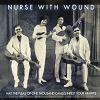 In 2006, Steven Stapleton and his crew played their first official live concerts in over 20 years (the previous performances were not billed under the Nurse With Wound name). These performances in San Francisco saw the group focus mainly on the musique concrête- and krautrock-inspired elements of Nurse With Wound, eschewing recognisable tracks for live jamming with (what was then) new sounds and samples. The end result is a remarkably good album whose almost incidental ambience is as unsettling as it is compelling.
In 2006, Steven Stapleton and his crew played their first official live concerts in over 20 years (the previous performances were not billed under the Nurse With Wound name). These performances in San Francisco saw the group focus mainly on the musique concrête- and krautrock-inspired elements of Nurse With Wound, eschewing recognisable tracks for live jamming with (what was then) new sounds and samples. The end result is a remarkably good album whose almost incidental ambience is as unsettling as it is compelling.
This album was a surprise for me because I was under the impression that these San Francisco shows were live versions of Salt Marie Celeste along the lines of the Vienna concerts that preceded these concerts (released as Soundpooling three years ago). Although the familiar strains of Salt Marie Celeste does intrude several times during the course of this CD (a blend of both nights at the Great American Music Hall), Nurse With Wound explore very different terrain here compared to the other live performances I have heard (either in person or in bootleg). This is most likely because Nurse With Wound are credited as being a nine-piece band for these shows, a far bigger line-up compared to their other performances. As such, there are times when the music stops sounding like Nurse With Wound at all; electronic drones appear a few times that could be from Coil’s Live One recordings and later on in the performance there is some music that I believe is taken from a track on Irr. App. (Ext.)’s Perekluchenie.
One of the most striking features of May the Fleas of a Thousand Camels... is the use of Diana Rogerson’s vocal tracks that would later end up on her albums The Lights Are On But No-one’s Home and No Birds Do Sing. Here they take on a different character, melting into the abyss and then resolving into a crystalline clarity like a ghostly transmission fading in and out of contact. Unlike the more recent performances by Stapleton and company, there is little in the performance resembling humor (although the photoshopped sleeve art of Andrew Liles spanking Colin Potter is hilarious). As time has gone on, the group have incorporated more of Nurse With Wound’s absurdity into their live performances and it is obvious from this album and Soundpooling that the early performances were less light-hearted. The music here is strongly imbued with those dark hues that colour the more unnerving moments of Stapleton’s work. Due to this eerie atmosphere and the range of novel sounds and textures, this becomes less of a live document and more of a “proper” entry in Stapleton’s back catalogue.
May the Fleas of a Thousand Camels Infest Your Armpits is not only a good Nurse With Wound album but for geeks like me who like to chart when and where changes in artistic direction happen, it is a valuable record in showing how the “not a Nurse With Wound” ensemble that performed in Vienna became the all-singing, all-dancing Nurse With Wound experience that is now very much enjoying the limelight. Like Soundpooling, it is hard to hear that this is a live album as it sounds every bit as polished as any of Stapleton’s studio releases. The bass is booming and the mix is superb, every minute of the performance sounds as crafted as any studio project. Because of this, May the Fleas of a Thousand Camels... should not be discounted as just a live album but a release that sits up there with Stapleton’s best work of this decade.
samples:
Read More
- Administrator
- Albums and Singles
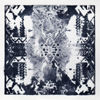 This is the fourth beguiling release culled from Honest Jon's plunge deep into the EMI Hayes archive of forgotten 78s. Like Sprigs of Time, Living Is Hard, and Give Me Love before it, this is a singular and expertly curated exploration of some seriously obscure music. Unlike those albums, however, Open Strings also features the curious (and possibly misguided) addition of a companion album of modern artists that mine similar territory.
This is the fourth beguiling release culled from Honest Jon's plunge deep into the EMI Hayes archive of forgotten 78s. Like Sprigs of Time, Living Is Hard, and Give Me Love before it, this is a singular and expertly curated exploration of some seriously obscure music. Unlike those albums, however, Open Strings also features the curious (and possibly misguided) addition of a companion album of modern artists that mine similar territory.
Honest Jon's Records
Entertainment Weekly once proclaimed Honest Jon's "the hippest world-music label going" and there is a lot of truth in that, despite both serious competition from Sublime Frequencies, SoundWay, and Analog Africa and that particular magazine's historically misguided and unfortunate musical taste. If someone had told me ten years ago that Damon Albarn from Blur would someday play an integral role in shaping my musical taste, I would've dismissed them as a madman, but...damn, that guy seems to unearth some astonishing stuff. The 20 tracks of archival material collected from Egypt, Iran, Iraq, and Turkey here are ample proof of that.
There is a lot of instrumental variety displayed on the archival disc; I am not an expert on traditional Arabic music by any means, but I think I can confidently report that ouds, buzuqs, and violins are all heavily represented (and probably some quanun too!). The tracks vary quite a bit in tone as well, as blistering shredding (such as "Mavaraounnahr") coexists with mournful bowed strings and contemplative drones, but the performances are uniformly virtuosic. I was unable to track down any English language information about him, but multi-instrumentalist Nechat Bey seems to dominate the album, as he contributed five of the twenty tracks, as well as the album's most haunting moment (the achingly sad violin in "Husseini Taxim"). Even without him though, this would be an inarguably compelling listen; few tracks fail to evoke a sense of passion and timelessness.
As for the second album....well, I have some mixed feelings about it. I certainly understand its inclusion, as it makes a case for the continued influence of traditional Middle Eastern string music. However, the presence of contemporary white revivalists here kind of cheapens the experience and ruins my music geek fantasy of embracing something forgotten and obscure. In particular, I found Rick Tomlinson's "Surfin' UAE" to be especially unwelcome and illusion-shattering (I suppose kitschy irreverence has its place and all, but a less forgettable track would have been a welcome substitution). Also, the Charie Parr piece ("Paul Bunyan's Fall") seems as heavily indebted to American blues as it does to the Middle East. It is not a bad track by any means, but I suspect there are dozens of freakfolkies who could've have contributed a more thematically pure work. Finally, the second disc feels somewhat unnecessary and anticlimactic because the evolution of the form has not been especially dramatic (except for production quality). Of course, all that is mere subjective carping- there are some very strong pieces by the usual suspects here (Sir Richard Bishop and Six Organs Of Admittance), as well as some more obscure folks (Micah Blue Smaldone). I even have to grudgingly admit that MV and EE's sitar drone ("You Matter, Sometimes") is quite good, even though they usually leave me rather cold.
While it would have been nice if the second album were optional (and if some information on the artists had been included), Open Strings is undeniably a wholly worthwhile release (and clearly a labor of love). Of course, if you are interested in music of this sort, the opinions of a reviewer are unlikely to sway you either way- this is ground that no one else is in a hurry to cover. Thus, by default, this is both definitive and essential (unless you are an extremely hip nonagenarian that snagged all these releases their first time around). I hope this series thrives and finds an audience, as the EMI Hayes Archives has certainly yielded quite a few forgotten gems and unusual listening experiences already and seems unlikely to be exhausted by a mere handful of compilations.
Samples:
- Sir Richard Bishop - Olive Oasis
- Moustapha Bey Rida - Taxim Hugaz Kar Wahda
- Abdul Hussein Khan Shahnazi - Mavaraounnahr
Read More
- Administrator
- Albums and Singles
 Originally released on vinyl only in 2008, this album sold out almost immediately and it is quite clear why: these are some thoroughly raucous jams and nobody but Sublime Frequencies is likely to be scavenging though Algerian 45s from the 1970s anytime soon. Ain't no party like an Algerian party.
Originally released on vinyl only in 2008, this album sold out almost immediately and it is quite clear why: these are some thoroughly raucous jams and nobody but Sublime Frequencies is likely to be scavenging though Algerian 45s from the 1970s anytime soon. Ain't no party like an Algerian party.
Sublime Frequencies
The title of this album is a bit misleading, as Raï music has been around in various forms since the 1930s. However, the "underground" part is entirely accurate: these recordings are from a controversial transitional period in Rai's history (the birth of Pop Raï) in which secular/Western influences and modern instrumentation began to take a much greater role. The genre's flouting of fundamentalist gender role restrictions and embrace of hipper lyrical matter naturally found a large following among Algerian youth, but did not win any friends in the Islamic government. In fact, the Algerian government even tried to ban Raï entirely in the late 1970s–early '80s due to its association with public female dancing and celebration of alcohol and consumerism, but it thrived in France and at home through black market sale and trade of tapes. Nevertheless, it continued to be a very unpopular musical genre with Islamic extremists for quite some time (Cheb Hasni was even murdered in 1994 for letting girls kiss him on the cheek during a televised concert), although government hostility eased in the '90s and Raï now enjoys considerable mainstream success.
Bellemou & Benfissa's opening track ("Li Maandouche L'Auto" or..um..."He, Who Doesn't Own A Car") begins in a deceptively subdued and droning manner, which makes the eventual introduction of the heavy, unruly, and thoroughly propulsive drums somewhat startling. The album doesn't let up at all after that. It is certainly clear how this sort of thing could result in something as unsettling as public female dancing, as the combination of deep, insistent rhythms and boisterous trumpets create a celebratory feel that must've made inhibitions damn hard to maintain (and rebelling against oppressive regimes is inherently pretty sexy to begin with).
There are no weak or filler tracks. I am quite fond of Boutaiba Sghir's "Dayha Oulabes" ("I'll Marry Her Whether They Like It Or Not"), which sounds like a melancholy mariachi band jamming with some African drummers. Sadness is a recurring theme throughout this album in both the vocals and omnipresent traditional violin/accordion melodies, but rather than drag the songs down, it merely adds some emotional heft to the awesome party that the rhythm section and trumpet players seem to be having. Cheb Zergui's "Ana Dellali" ("I Cuddle Myself") also warrants some mention, as it is the track that most conspicuously betrays a Western influence (featuring a funky bassline, wah-wah guitar, and an atypically laid-back groove). Incidentally, I think something may occasionally be getting lost in the title translations here.
As is often the case with Sublime Frequencies releases, these recording are raw (the drums kind of sound like buckets). The lo-fi production suits the music well, as all eight of the tracks here explode from the speakers and likely approximate at least some of the raw power that must have been present in Wahran's clubs. If I had a grievance, it would be that several of the tracks sound very similar, but that might just be the cultural bias of my boring Western ears. However, this only seems to trouble me when I am listening with extreme reviewer/music nerd scrutiny; this issue vanishes when I listen to this album like a normal person. Also, I was disappointed that no females were represented, given that they were essential (as well as the most endangered and oppressed) proponents of this outlaw culture. Regardless, Hicham Chadly and Sublime Frequencies have compiled some seriously excellent and instantly satisfying music that I never would have heard otherwise, so my quibbles should probably be taken as the irrelevant ramblings of a curmudgeon.
Samples:
- Bellemou & Benfissa - Li Maandouche L'Auto
- Boutaiba Sghir - Dayha Oulabes
- Cheb Zergui - Ana Dellali
Read More
- Administrator
- Albums and Singles
HOLY SONS - Drifter's Sympathy - CD
imprec225 - CD - $12.99 
Brand new full length from Grails/Om member Emil Amos.
While burying himself in old books on Cold War espionage and 70's Italian horror soundtracks, Emil Amos logged many hours into the night layering endless tracks of improv and then editing them into a cohesive sonic blanket over 2 years time.
He emerged with his 6th full length record under the name "Holy Sons" called "Drifter's Sympathy". Listeners will recognize Amos' signature hallucinatory/LSD-inspired
mixing-style heard on records like 'Black Tar Prophecies', 'Doomsdayer's Holiday' and 'Take Refuge' by his other group Grails."Drifter's Sympathy" draws from the instrumental moods of 'Grails' and melds perfectly with his usually vocally-based solo-project creating a densely paranoid atmosphere that
evenly balances sonic experimentation with refined folk/blues song-forms.
The main cornerstone of influence for "Drifter's Sympathy" are the German experimental four-track journeymen like Gunter Schikert, Eroc and Achim Reichel whose records reflected a sonic appetite that challenged the limits of the expressiveness of each instrument and
tried anything in the mixing process to create a sound-world as labyrinthine and complex as the human mind itself. Rather than making music based only on skill, melodicism, soulfulness or technique, "Drifter's Sympathy" seems to argue that the most vital quality in music is pure imagination.
Read More
- Administrator
- Albums and Singles
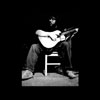 In 1969, Mississippi Fred McDowell plugged in an electric guitar, and like Bob Dylan just a few years earlier, alienated many purists who could not fathom such radical change. So as not to encourage any ambiguity or doubt, McDowell's first electric record was titled I Do Not Play No Rock 'n' Roll. Whether or not Jack Rose is trying to cure ambiguities of his own with this record is unclear, but it is obvious that he's ready to move into new territory.
In 1969, Mississippi Fred McDowell plugged in an electric guitar, and like Bob Dylan just a few years earlier, alienated many purists who could not fathom such radical change. So as not to encourage any ambiguity or doubt, McDowell's first electric record was titled I Do Not Play No Rock 'n' Roll. Whether or not Jack Rose is trying to cure ambiguities of his own with this record is unclear, but it is obvious that he's ready to move into new territory.Classifying Rose as a pure revivalist has never made much sense, especially considering the scope of his career. Pelt, for instance, was too extravagant and free-spirited to be pigeonholed and his solo output is highly varied despite the fact that John Fahey is the only name I hear associated with him. He is indebted to Leo Kottke and Robbie Basho as much as he is to John Fahey. Perhaps to the untrained ear all these influences will sound similar, but ask any guitarist or pull up any Google search on the topic and you'll get a taste of Rose's diversity. His music exists somewhere between the epic scope of Indian-influenced instrumental music and the roots music of American blues and folk. He is equally cosmic and terrestrial in all that he does and tends to shy away from extremes. It is for this reason that his Three Lobed release sticks out as an oddity. Compiled from live performances in Chicago, Amsterdam, and Pennsylvania, I Do Play Rock and Roll witnesses Rose moving away from his ragtime and blues-inspired mode in order to re-encounter the the hallucinatory and hypnotic power of his early solo output. Truth be told, such experimentation and diversity was present on Dr. Ragtime and His Pals and Kensington Blues, but on I Do Play... the rolling and ethereal qualities of which Rose is capable dominate the comparatively relaxed and familiar sounds of American folk music with which he is so often associated.
To this extent it is difficult to understand why Rose thinks this album has anything to do with rock and roll. His phrasing, tone, and predeliction for intricacy all betray any ties to rock music, not to mention obvious things like the lack of lyrics and regular rhythms. Rose's playing sort of rambles along: it sometimes mumbles and sometimes explodes with clarity and memorable melodies, but it never dissolves into pure improvisation. On "Calais to Dover," which originally appeared on Kensington Blues in an abbreviated form, Rose often falls into introspective movements where quickly fingered rhythms acquire a wave-like quality, rolling as they do in splashes of force and emphasis. His focus is mostly rhythmic throughout the piece and though clear melodies exist, rhythm nevertheless asserts itself as the primary element, forcing the ear to listen for metered patterns instead of melodic or harmonic ones. This song is far and away the best piece on the record and it is arguably its center. "Cathedral et Chartres," also from Kensington Blues, isn't half as long as "Calais to Dover" and runs only a fraction of the time that "Sundogs" does. It is more pastoral and gentle than either tune and, in some ways, occupies its place on the record only to provide relief between the two extremes found on the other songs.
If this album's title is to have any meaning whatsoever, it is to be found somewhere on "Sundogs," the album's final song. It's a 20-plus minute, high-pitched drone apparently extracted from one or more of Rose's guitars. It is cold, steely, and a little frightening with little variation. It provides practically no insight into what Rose might be doing and is generally mystifying from start to finish. There are audible coughs on the recording and it isn't difficult to imagine a few confused and perturbed audience members shuffling about, wondering what it is that Rose is trying to accomplish. In fact, I feel this way listening to the recording. It serves up dark introspection and creeping dread in massive doses, but is the complete antithesis of everything else on the record. Sounding like the complete obliteration of everything Rose has done in the last few years, "Sundogs" is both enjoyable and a little frustrating. Whether or not Rose is signalling a new beginning or simply throwing his listeners something different is up for debate. One thing is clear: if Jack Rose thinks he's playing rock and roll, it's because he's thinking about McDowell and Dylan and what happened when they decided to plug in and change their approach a little.
samples:
Read More

